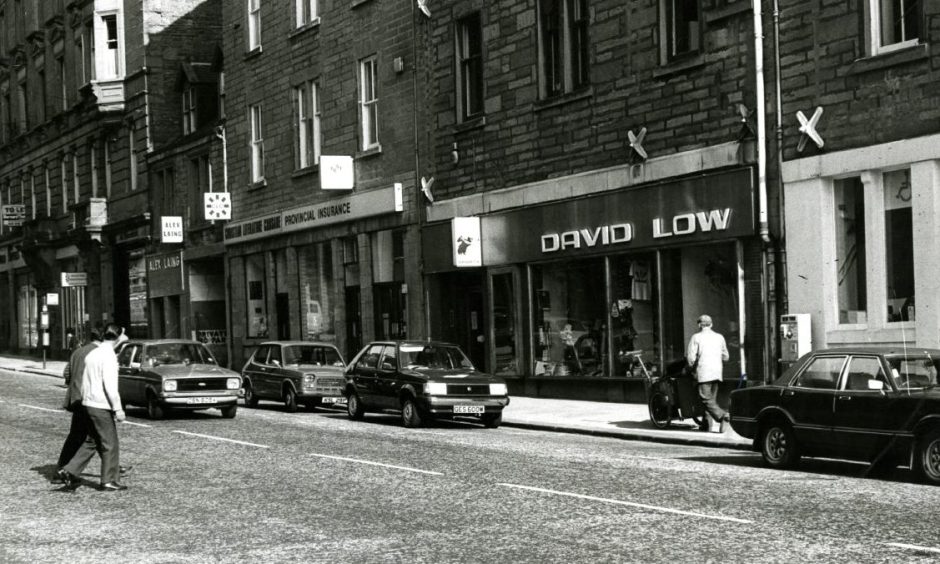
Dundonians knew David Low in Commercial Street was the place to go for sporting goods.
The family-run firm grew from humble beginnings as a Wellgate newsagent to become Dundee’s longest-established sports shop.
Low’s was an Aladdin’s Cave full of sporting equipment before the rise of the multiples.
A one-stop shop where football kits, golf clubs and hockey sticks shared floor space with bowls, darts and finger-flicking Subbuteo teams.
Right from the outset, the name of David Low was synonymous with the game of golf.
In the mid-19th Century George Low was one of the first golfers to leave Carnoustie as a golf professional.
On leaving school he became assistant to Frank Bell, the greenkeeper at Carnoustie.
When the course was altered by old Tom Morris from 10 to 18 holes, he was given the job of cutting the holes for the first time.
This was done on a frozen New Year’s Day in 1872 with a mallet and a chisel and, as he carried his clubs with him as he went round, he was the first golfer to play the present Championship course.
His first professional job was at Hoylake in 1876.
He moved to Lytham St Anne’s where he developed a considerable reputation as both teacher and clubmaker.
He also laid out 120 courses throughout England and on the continent and it was in 1896 he patented the idea of a matched set of clubs.
While at Lytham, he had been joined by his nephew, David Low, as assistant clubmaker, and it was this David Low, who, returning home after being wounded in the First World War, opened a newsagent in the Wellgate.
He added an indoor golf school, employing Albert Robb from Carnoustie as instructor.
Ryder Cup ace was David Low’s star pupil
The golf enterprise moved to 31 Commercial Street in 1935 and grew to cover all sports in the post-war period.
Many famous golfers of the day came to be associated with the shop, including Willie Laidlaw from Perth and Johnny Murray of Pitlochry.
The great John Panton from Pitlochry became David Low’s star pupil and represented Great Britain three times in the Ryder Cup.
David Low pioneered demonstrations of archery, shinty and many other sports.
He opened a branch at Links Avenue in Carnoustie in 1955.
But that same year, he was found dead.
Low was 71.
Reverend Douglas Lister from St Stephen’s Church said Low was distinguished for the “outstanding graciousness, generosity and constant thoughtfulness of his personality”.
He said the acute sense of loss would be shared “by almost all members of the community in Carnoustie and in Dundee, and, in truth, to the ends of the earth”.
The reins passed into the hands of his son, Millar Low, and the commitment to golf continued into the 1960s with sponsorship of the David Low Scottish Professional Championship and later the Scottish Boys’ Strokeplay Championship.
A Seagate branch opened in Dundee and there was a huge selection of football boots from Adidas, Condor and Slazenger.
Dundee FC and Dundee United football strips were on sale.
Match tickets were also available behind the counter, including for Scotland games.
These were the days when Meldrum’s in Reform Street, Kidd and Wallace in High Street and David Low’s were the three sports shops in Dundee.
David Low moved to new Dundee premises in June 1972
In June 1972 Low’s moved from 31 Commercial Street just down the road to the former Hydro Board accounts offices at number 21.
The ground floor stocked everything for athletics, badminton, billiards, bowls, cricket, darts, football, rugby, squash and tennis.
There was also a whole range of smaller games and sports equipment like chess, draughts and Subbuteo.
Low’s famous golf shop was on the first floor.
A vast selection of golf shoes were on offer alongside complete sets of clubs.
Golf bags of every size and price were hanging from the walls and there was a comprehensive range of caddie cars.
Another wall was lined with putters with a putting strip for practising.
There was a display counter for balls and tees plus second-hand clubs.
There were golfing clothes in various styles and colours.
A practice net was used for giving lessons as well as trying out new clubs.
The second floor catered for camping, climbing, skiing and swimming.
Their timing was good.
Hollywood had taken notice of climbing in 1972 with the Clint Eastwood movie The Eiger Sanction, which saw many people drawn to the challenge.
Skiing morphed from an outsider activity to an accessible sport.
Low’s were importing large numbers of skis from the continent and its popularity increased when Ski Sunday was launched on the BBC in 1978.
Back then you could buy a pair of skis from David Low for £69.95.
What else could you buy in 1978?
Football strips were priced from £7.55 to £11.60 with the range including Dundee, Dundee United, Celtic, Rangers, Liverpool and Scotland.
Adidas football boots were £10.80 with all tracksuits costing £6.95.
A football was £6.75.
The World Cup edition football was £8.95 – if you weren’t battle-scarred from Scotland’s ill-fated campaign in Argentina.
A hockey stick was £5.50.
Billiard tables ranged from £18.95 to 120.25.
Golf clubs included the Ben Crenshaw range with a single club £13 and £15.
A badminton racquet was £11.50.
Sleeping bags were £5.85 and climbers’ balaclavas £3.40.
Business boomed in the 1980s.
You could also save money by joining the David Low Sports Club for a small annual membership charge, which brought benefits including 10% off.
There were branches in Commercial Street, Carnoustie and St Andrews.
David Low celebrated 60 years in business in 1993 and was still the first name that would spring to mind as the sporting choice for Dundonians.
End of an era for David Low in 2002
Eventually, the changing nature of shopping led to its closure.
Bricks-and-mortar retailers struggled to match online discounts and the business went into members’ voluntary liquidation in 2002.
The Schoolwear Shop took over the premises.
Of course a walk around the area looks far different today.
But the memories remain.
Norrie Price – author of Up Wi’ The Bonnets! and They Wore The Dark Blue – recalled the wonder and magic as well as the sounds, sights and smells.
He said: “For a football-daft lad in his late-teens, as I was in the late 1960s, a visit to David Low’s in the Seagate was like entering a well-stocked sweetie shop.
“The joy for me was seeing all the blue Adidas boxes with the latest three-striped boots out on display.
“Then there were the latest football strips, pristine in their clear cellophane packets.
“And the distinctive smell of the leather of footballs and new boots.
“The shop moved and expanded but, for me, the original had more intimacy.
“It was unforgettable.”

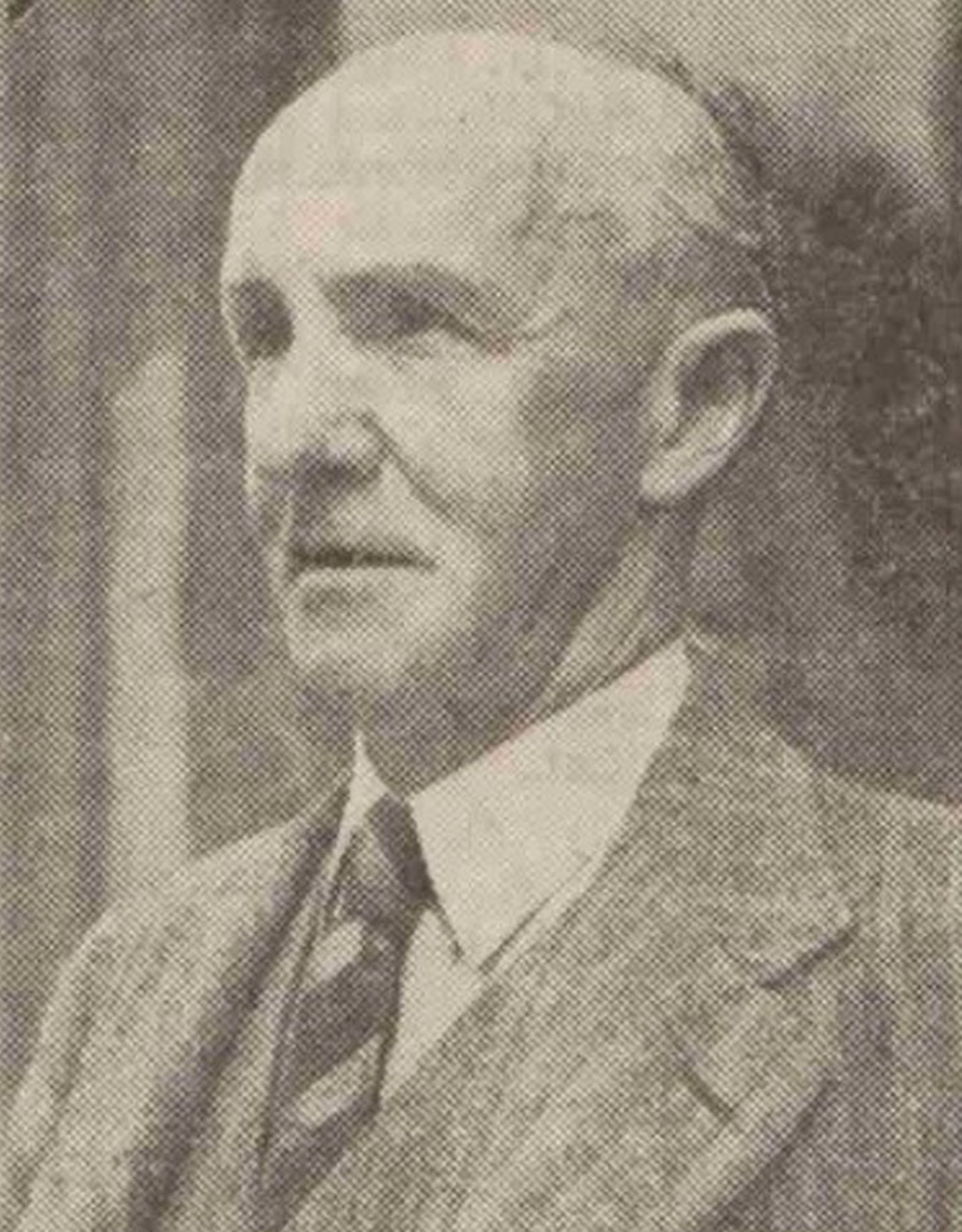
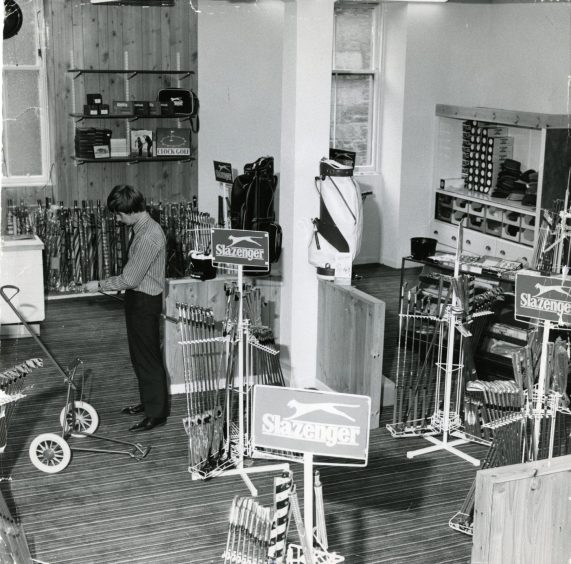
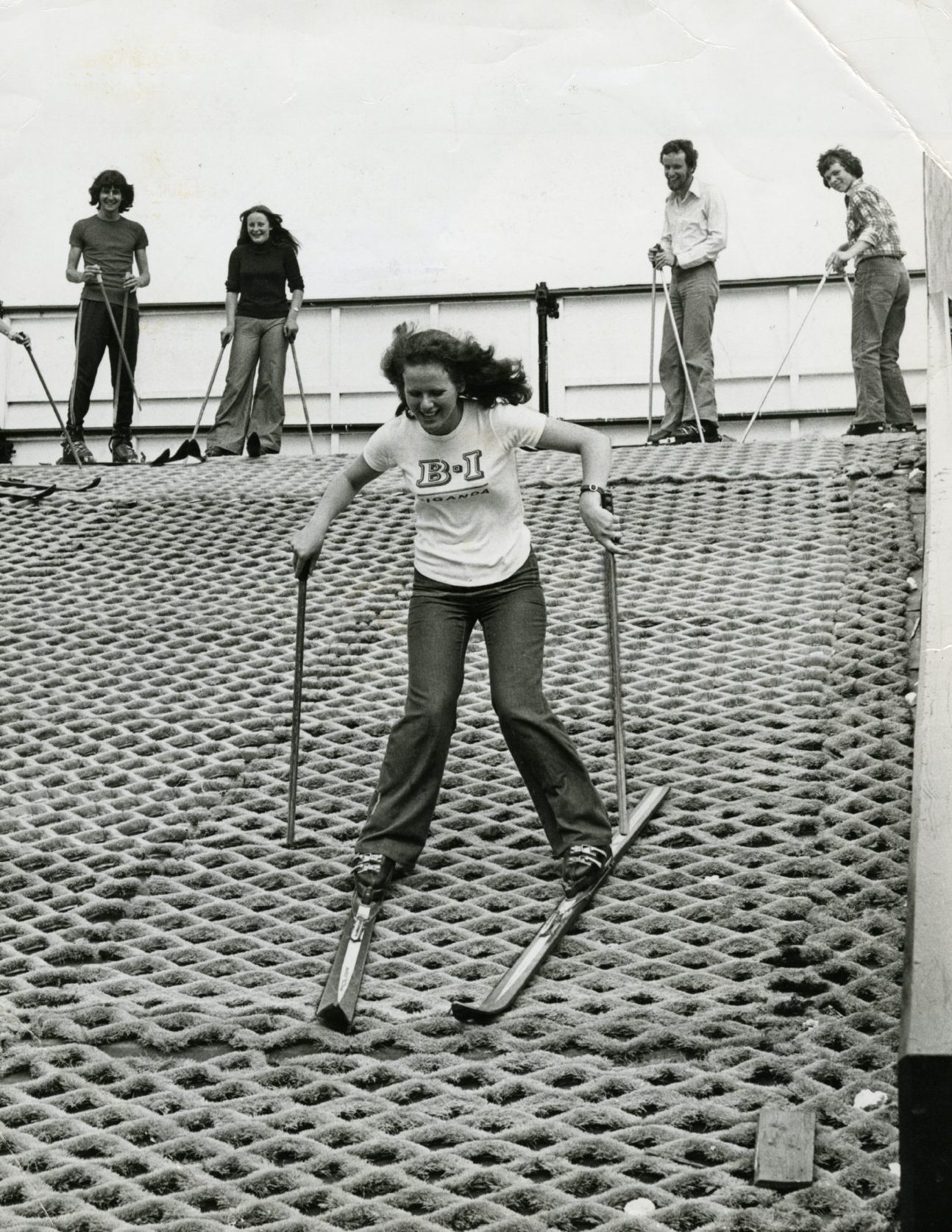
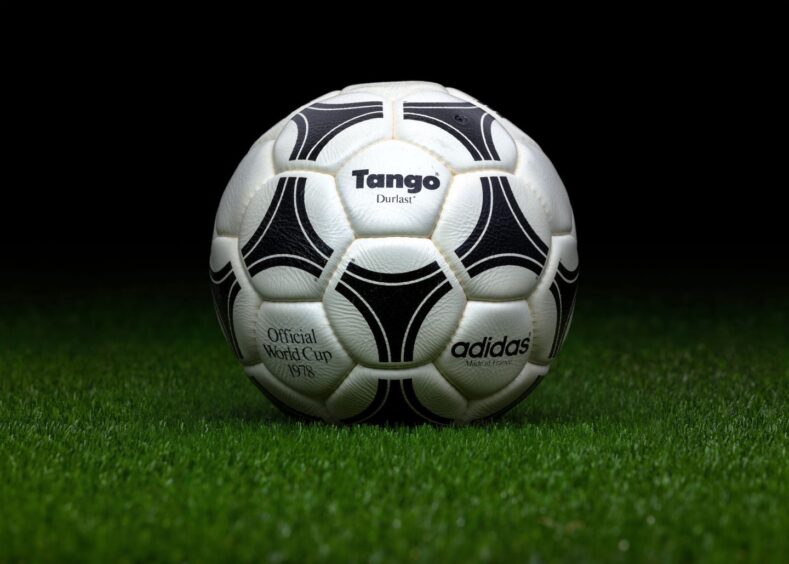
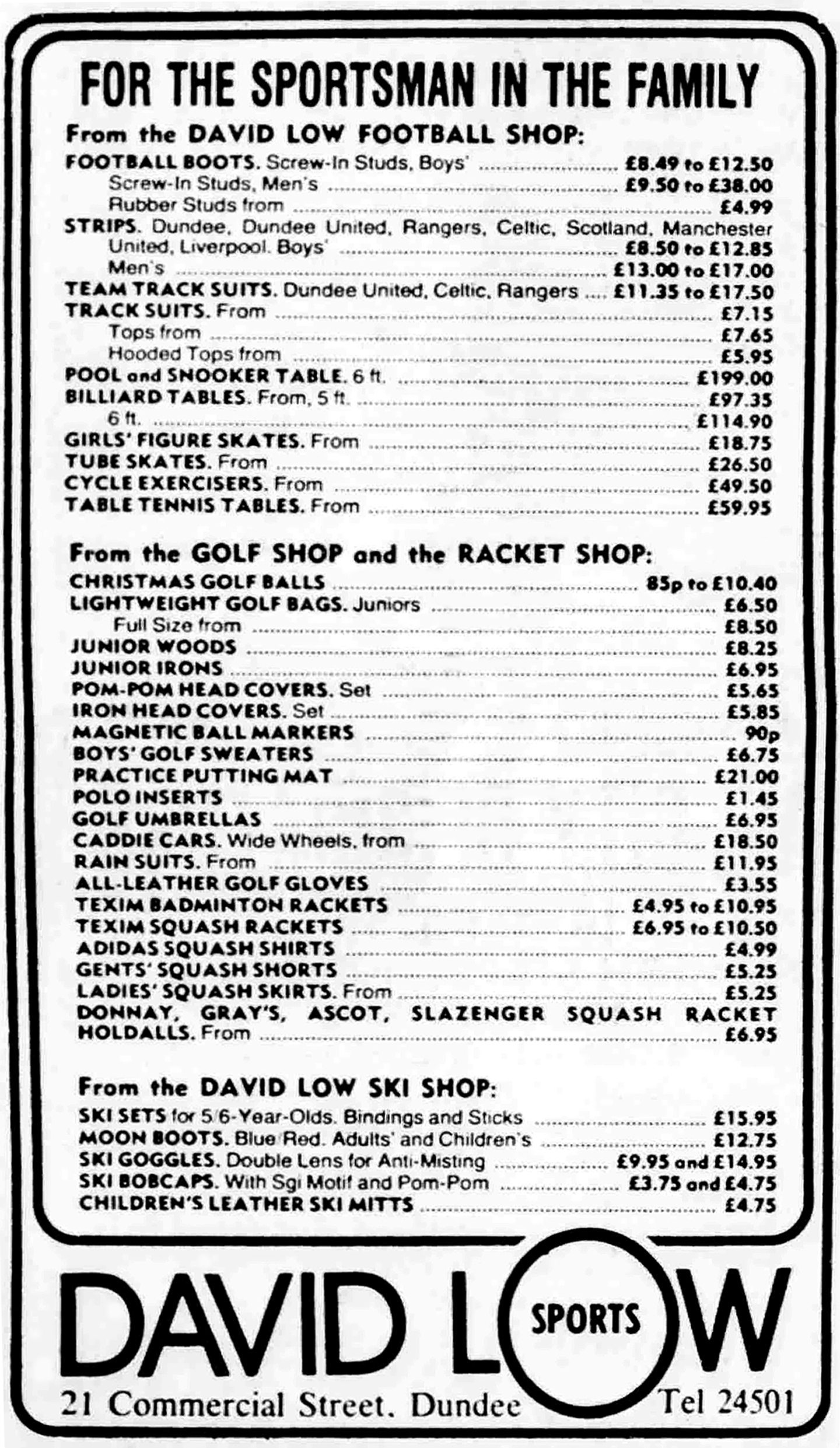
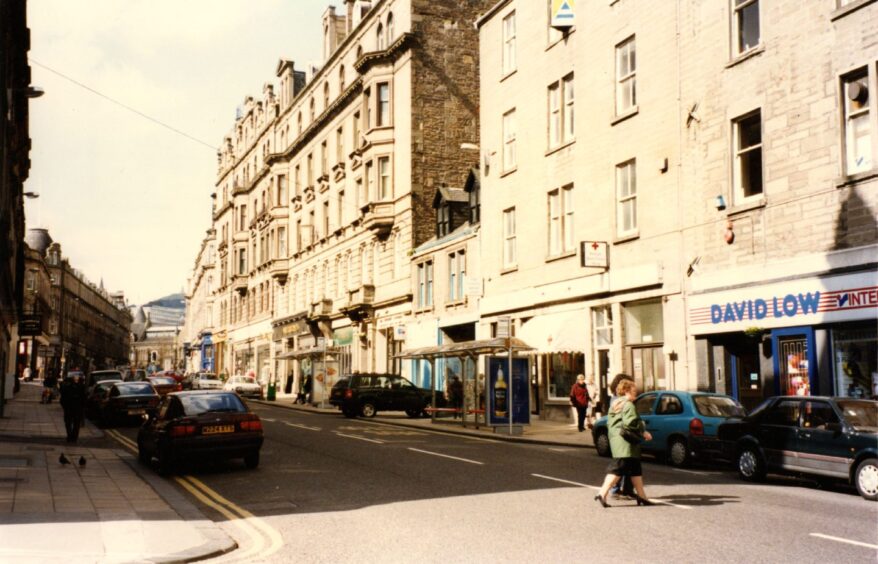










Conversation